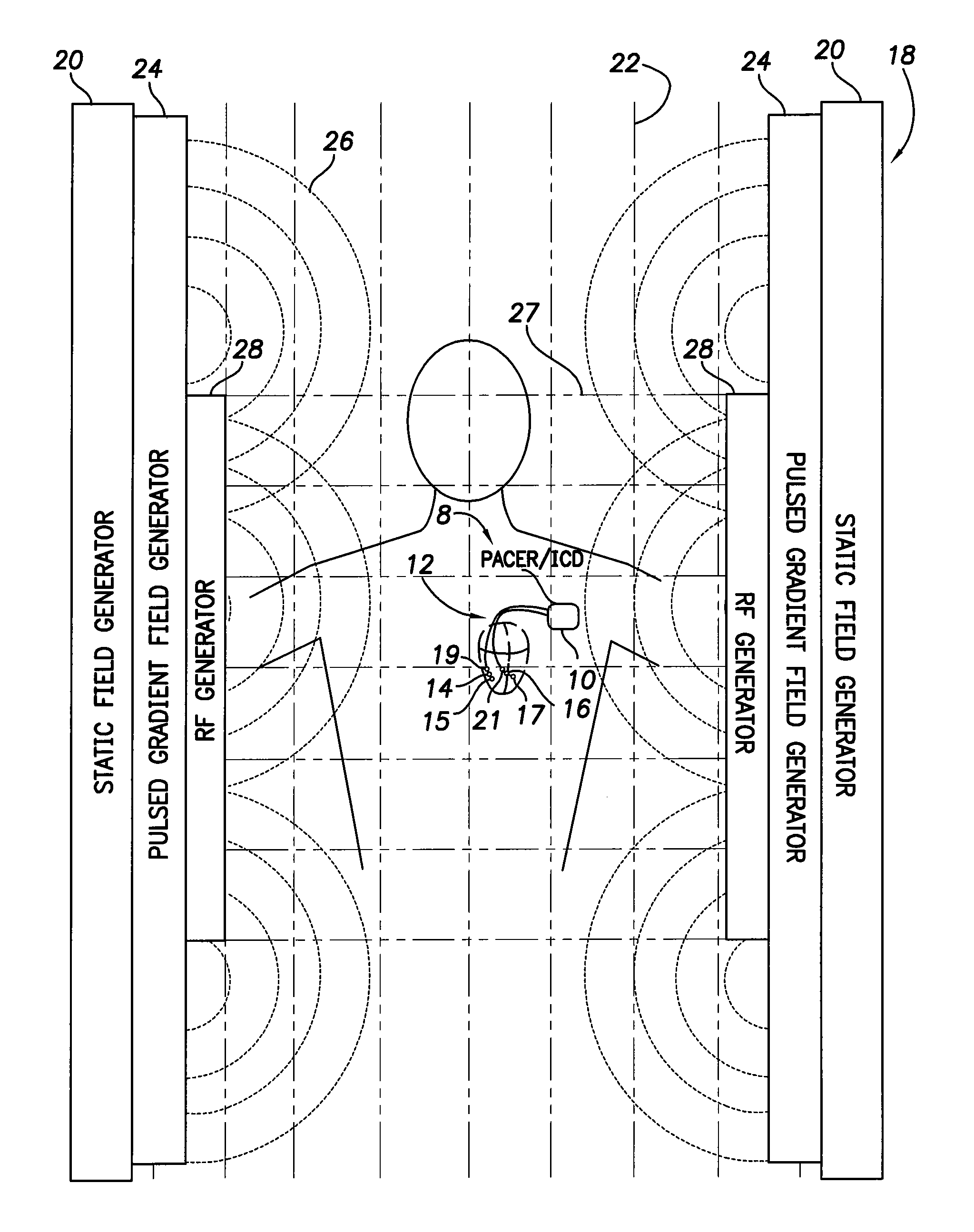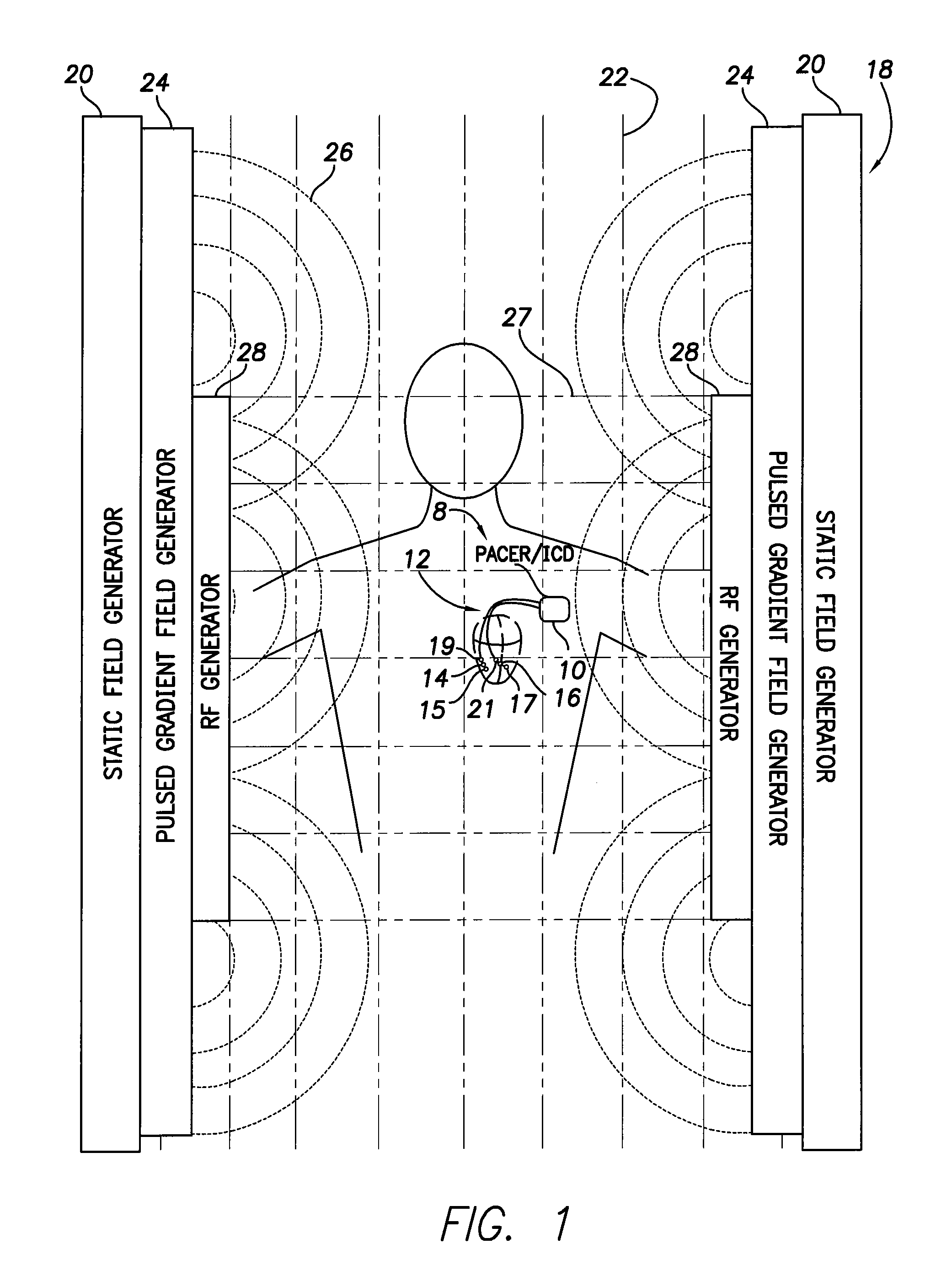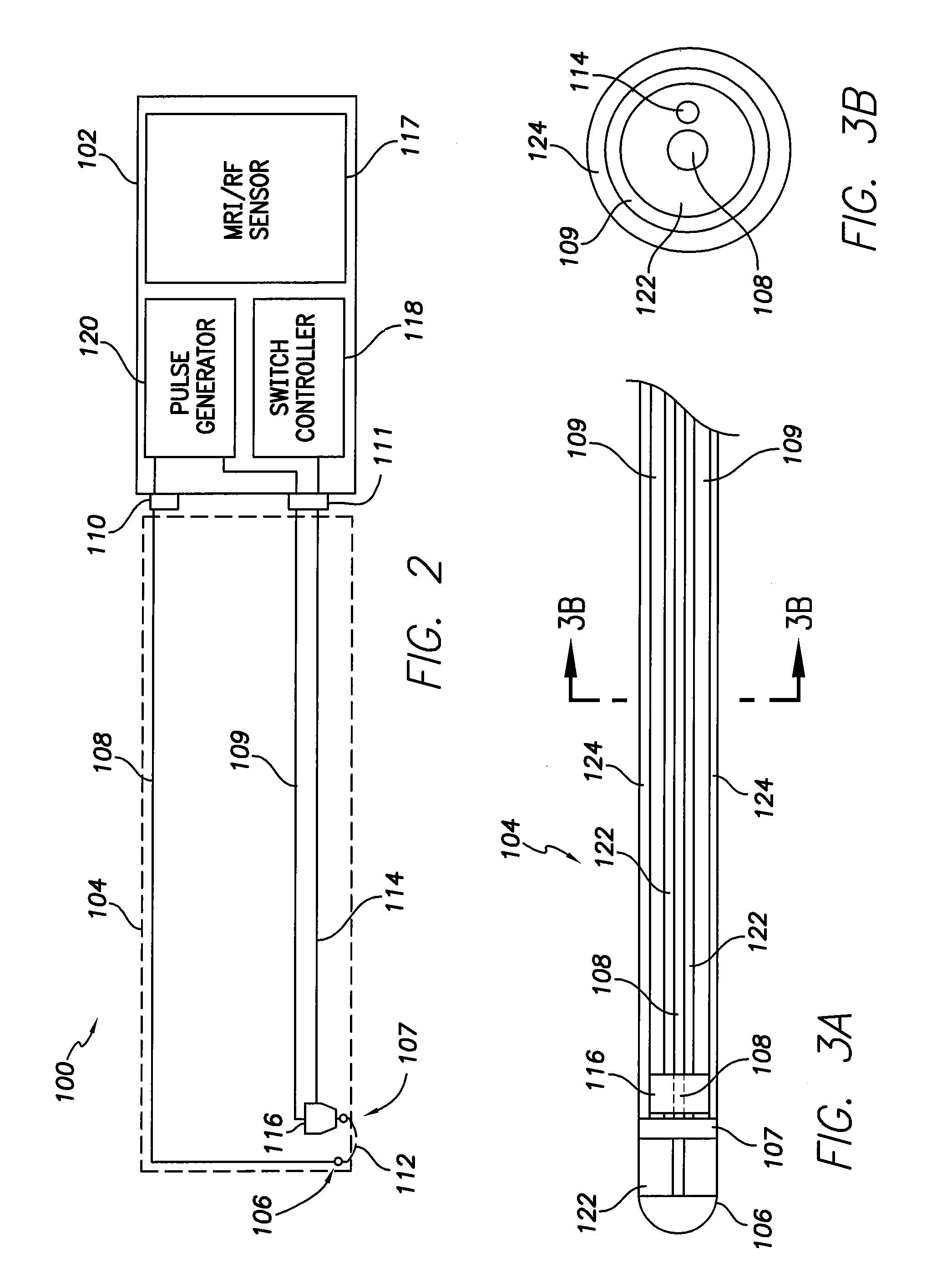Systems and methods for exploiting the tip or ring conductor of an implantable medical device lead during an MRI to reduce lead heating and the risks of MRI-induced stimulation
a technology of implantable medical devices and lead electrodes, which is applied in the direction of internal electrodes, transvascular endocardial electrodes, therapy, etc., can solve the problems of affecting the safety of patients with implantable medical devices such as pacemakers, affecting the safety of patients with implantable medical devices, and damaging adjacent tissues or the lead itself, so as to reduce the risk of undue lead heating and prevent the heating of the ring electrodes , the effect of reducing the risk of und
- Summary
- Abstract
- Description
- Claims
- Application Information
AI Technical Summary
Benefits of technology
Problems solved by technology
Method used
Image
Examples
Embodiment Construction
[0027]The following description includes the best mode presently contemplated for practicing the invention. The description is not to be taken in a limiting sense but is made merely to describe general principles of the invention. The scope of the invention should be ascertained with reference to the issued claims. In the description of the invention that follows, like numerals or reference designators will be used to refer to like parts or elements throughout.
Overview of MRI System
[0028]FIG. 1 illustrates an implantable medical system 8 having a pacer / ICD 10 for use with a set of coaxial bipolar pacing / sensing leads 12, which include tip and ring electrodes 14, 15, 16 and 17, as well as ring electrode switching elements 19 and 21. Switching circuitry within the pacer / ICD is operative to control the ring switches to electrically disconnect the ring electrodes from the pacing / ICD in the presence of MRI fields to reduce lead heating caused by magnetic fields generated by an MRI system...
PUM
 Login to View More
Login to View More Abstract
Description
Claims
Application Information
 Login to View More
Login to View More - R&D
- Intellectual Property
- Life Sciences
- Materials
- Tech Scout
- Unparalleled Data Quality
- Higher Quality Content
- 60% Fewer Hallucinations
Browse by: Latest US Patents, China's latest patents, Technical Efficacy Thesaurus, Application Domain, Technology Topic, Popular Technical Reports.
© 2025 PatSnap. All rights reserved.Legal|Privacy policy|Modern Slavery Act Transparency Statement|Sitemap|About US| Contact US: help@patsnap.com



